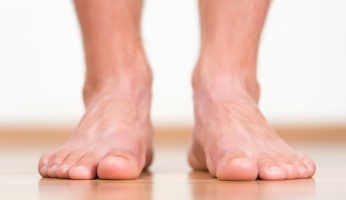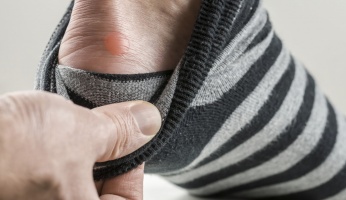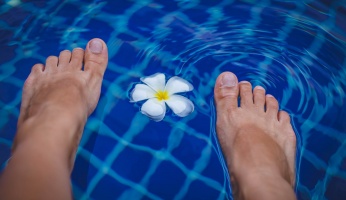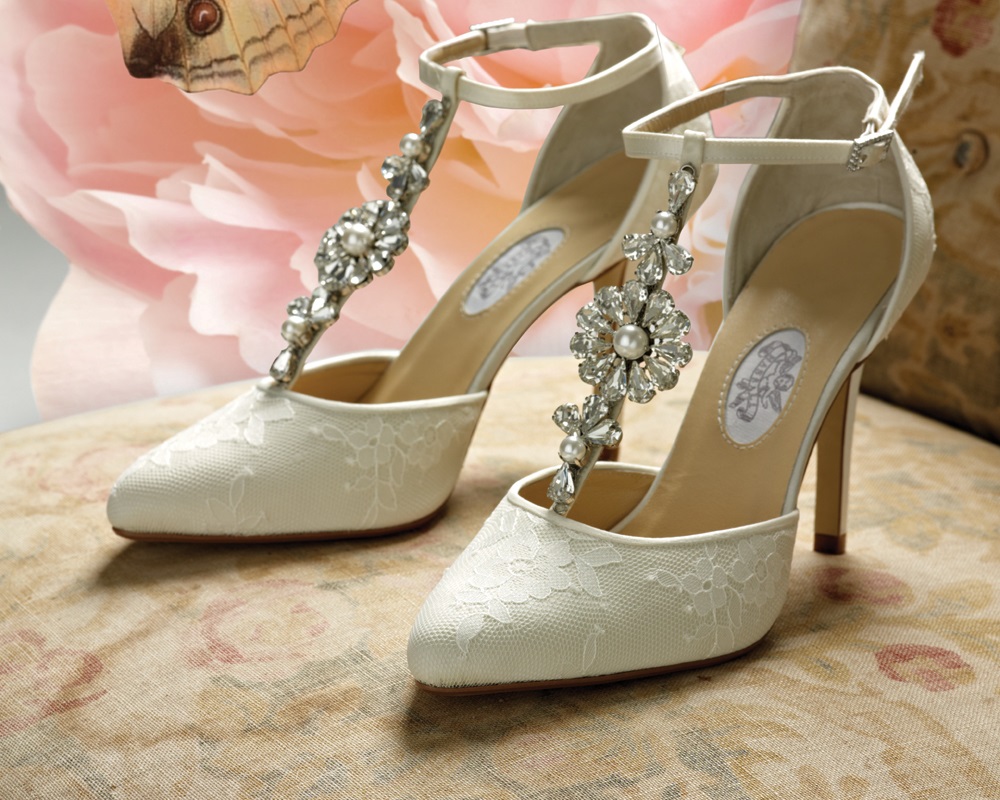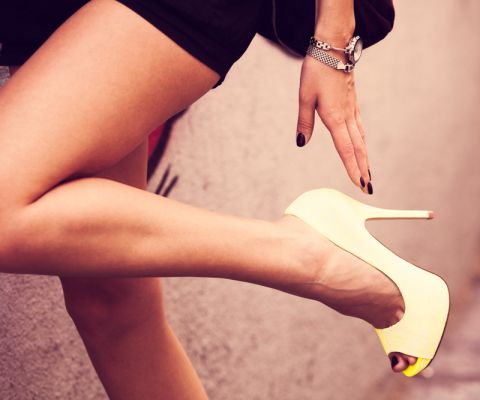Foot Callus & Corn Removal Plus Treatment: The Complete Guide
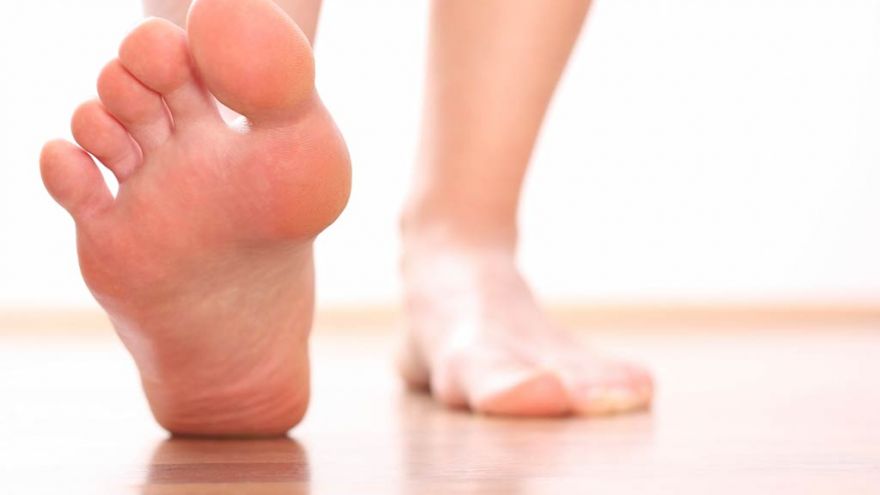 Foot Callus & Corn Removal Plus Treatment: The Complete Guide www.walkjogrun.net
Foot Callus & Corn Removal Plus Treatment: The Complete Guide www.walkjogrun.net Get Rid of and Prevent Calluses & Corns! Here’s How.
Most people have dealt with corns or calluses in one way, shape or form. It’s safe to assume anyone who has had to deal with them hates them too. Whether you used inappropriate shoes, cheap socks, or simply have delicate skin, they tend to find their way, and nobodies corn or callus proof. While they’re annoying for everyone, athletes tend to get it the worst.
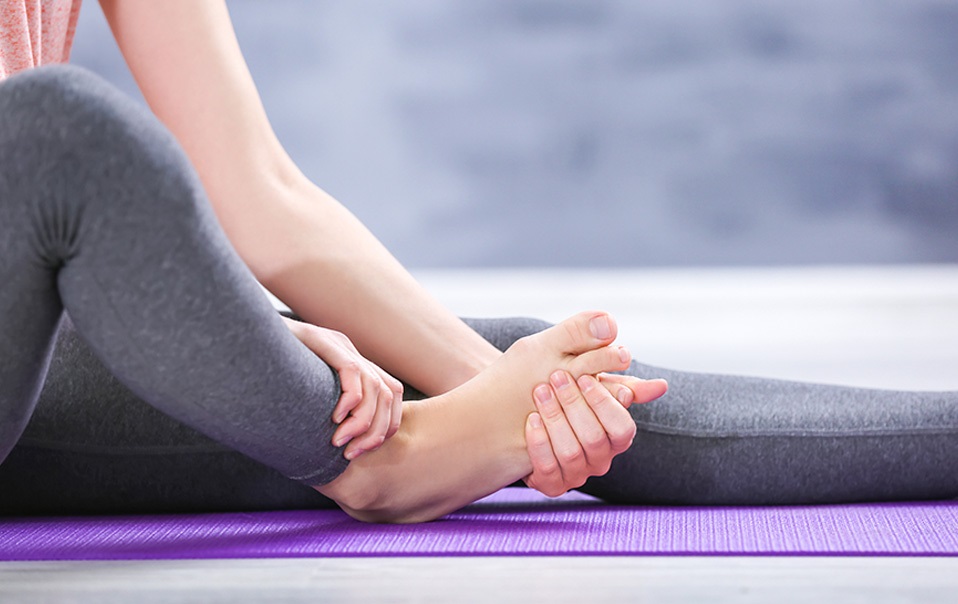
For athletes such as runners or soccer players, waking up with calluses or corns after a long performance day is arguably one of the most unpleasant experiences. Those little things manage to appear on some of the most annoying places on your foot, making sure you have your daily dose of bad words. But, we’re sure non-runners despise them equally.
We know how annoying they can get to be, thus we compiled a guide with multiple removal methods, treatments, and preventive measures. Before moving further into the guide, we’ll provide you with some basic information about them.
What are Calluses & Corns?
Calluses and corns are conditions that affect the surface of the skin. The scientific name of these symptoms is hyperkeratosis. While they are very similar conditions, they’re actually two separate things.
Calluses are flat areas of hard skin and usually cover more surface than corns. Corns, on the other hand, are smaller and located on a single spot of the skin. Corns typically have the shape of a cone or a circle, while calluses have no particular shape. Calluses are known as tylomas in medical terms, and corns as helomas.
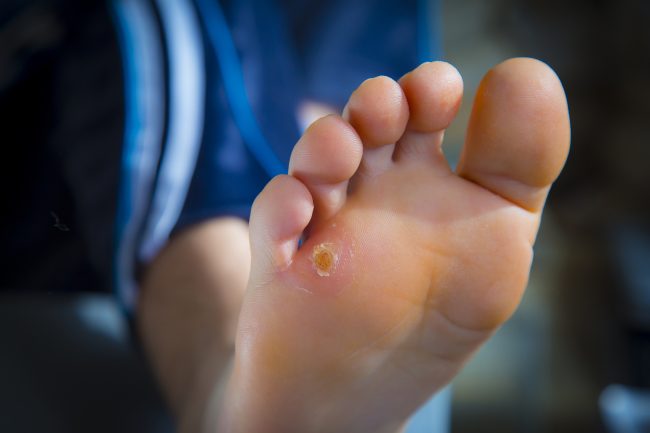
The size of these conditions, as well as the area of the body where they’re located, can determine their severity. Some users suffer a harmless and passive calluses condition; however, some others suffer an ear of extremely uncomfortable and even painful corn. While they frequently appear beneath the foot, they sometimes occur on fingers as well. Corns are considerably more delicate than calluses, and can certainly be much more painful.
The most basic symptoms of calluses and corns are hardened, caked zones of skin on the foot or palms. Some other indicators are bumped skin, white-looking and very dry skin, and sensible spots on the foot that are painful.
What Causes Them?
Though there’s a wide list of reasons for their occurrence, the most common cause is repeated pressure over the same area. Because of this, and depending on the activities you perform, certain areas of your feet are much more susceptible to calluses and corns.
The thickening of skin is a natural process performed by your own body to toughen areas that suffer consistent stress. This is similar to the process of fracture recovery; once a bone is broken, the body will develop a tougher bone to prevent it from breaking again. It’s because of this reason that calluses usually appear on the most delicate (and uncomfortable) areas. The goal of this is to make the area less susceptible to friction damage and stress.
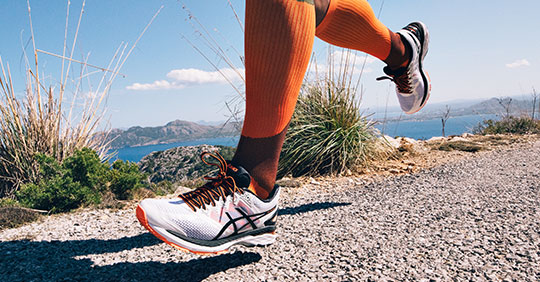
Some special cases that implicate low flow of blood around the feet, such as diabetes and arterial symptoms can be the cause too. Additionally, anatomy symptoms related to the structure of feet, such as deformities or overgrowth, are very likely to develop them.
A much more common cause for calluses and corns are improper shoes. For instance, shoes that are too low often generate friction between the inner shoe and the Achilles tendon. On most cases, this leads to the development of calluses on the area where the friction happens.
Shoes that are too tight also generate more friction, as the inner fabrics are much closer to the skin and rub with every motion. Additionally, the wrong range of motion or irregular gaits increase the tension placed on specific zones of the foot. This is another common cause for calluses and corns.
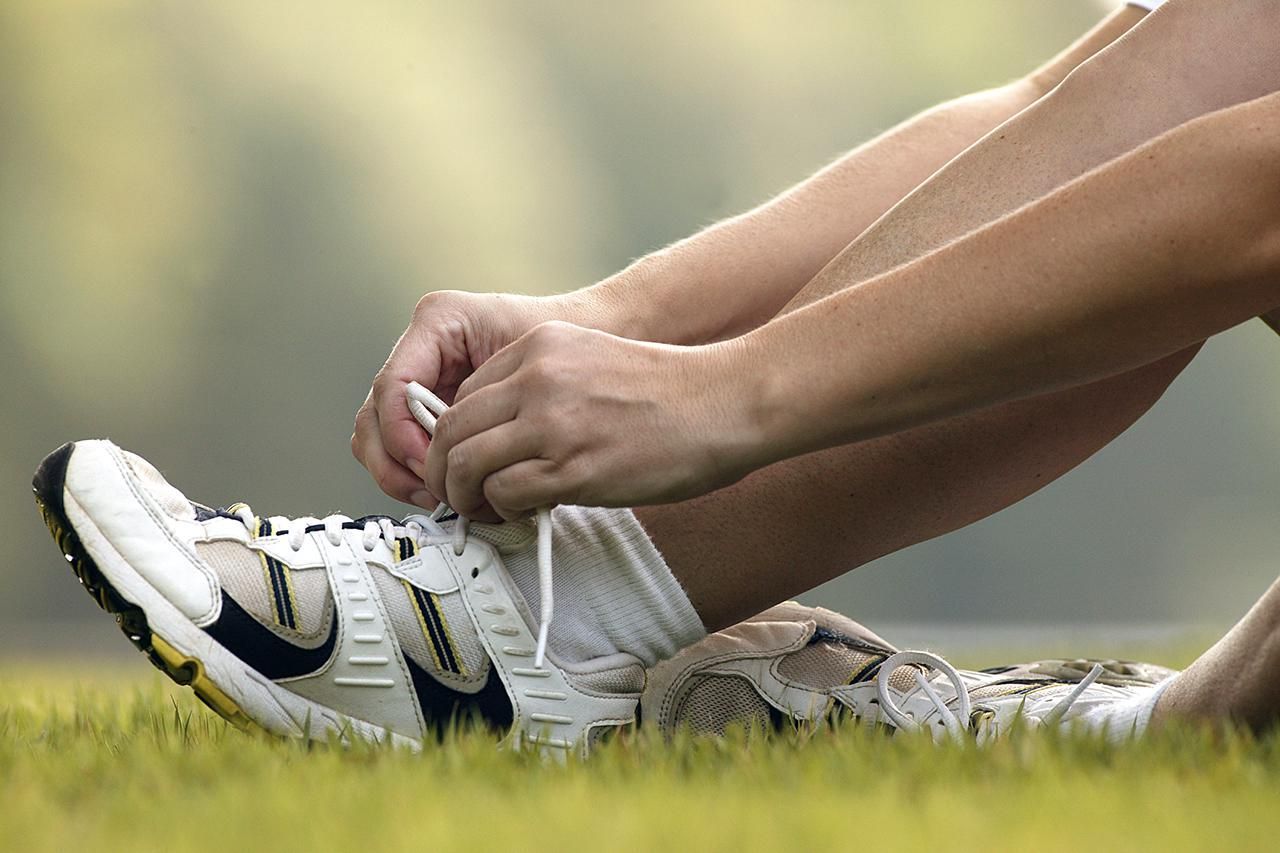
Corns occasionally appear on fingers too. The cause for this can be hard to determine, as most of the times they won’t appear on areas of common friction or stress. Generally, this symptom can appear on fingers due to prolonged handling of certain work equipment. The usage of tools can generate considerable pressure upon the fingers, as well as some instrumental elements like guitar cords.
Luckily for people suffering from these conditions, there’s a vast range of ways to remove calluses and corns. There’s also a much simpler solution than removing them; preventing them. Preventing this skin condition from appearing is actually far easier than having to deal with it in the future.
How to Prevent Them
These conditions might not directly affect your health, but they can be truly annoying. Prevention should be considered, especially during ages when the skin is more delicate; toddlers and seniors. But, people of all ages are susceptible to suffering from calluses or corns at any point of their life.
To prevent their occurrence and development, you should avoid the following risk factors:
- Wearing shoes that are too tight and compress toes together
- Wearing shoes that rub against your Achilles tendon
- Not wearing socks, or wearing socks that don’t prevent internal shoe friction
- Rough motions when performing in sports or running
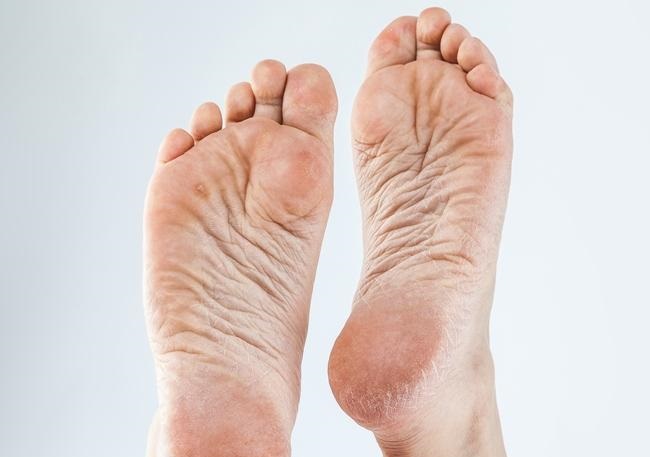
For people who suffer from anatomical issues, such as deformed feet and bundles, customization is a necessary prevention. There’s a common misconception that customizing your shoes is utterly expensive. It’s not. In fact, customization isn’t as complicated as it seems. Check out our guide on some of the best insoles.
Simple equipment such as a personalized insole can make the difference between consistent corns and a healthy skin. If your issue goes beyond an insole, you should try extra-wide shoes. Most manufacturers offer an extra-wide sizing of their shoe within an acceptable price. Users don’t have the necessity of requesting specially-crafted shoes unless it’s an extreme case.
These are some other preventive measures:
- Placing special cushions that resemble the natural shape of feet between your toes
- Foam paddings over the development areas of corns
- Foam paddings around the corn to redistribute the tension around it rather than over it
- Extra cushioning on the insoles to alleviate stress on the foot
Recommended Insoles
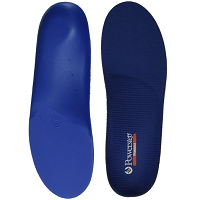
- Powerstep Pinnacle
-
Our rating - Double Layer Cushioning
- Price: See Here

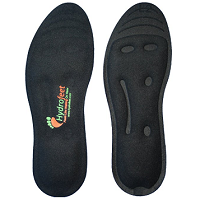
- Hydrofeet Liquid Massaging
-
Our rating - 50x Viscosity Rating
- Price: See Here

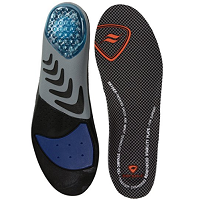
- Sof Sole Airr
-
Our rating - Skydex Air Bubbles
- Price: See Here

Home Removal of Calluses & Corns
There are plenty of ways to remove calluses and corns. They will likely fade away after the affected area stops suffering from pressure. However, depending on your case, that might require some time, and we know you might want to get rid of the problem ASAP.
Removing these skin anomalies is actually much simpler than you may think. In fact, there are very little cases in which this process requires any expert assistance or guidance. Yes, that means you don’t necessarily need to consult an orthopedist or dermatologist because of a corn. While they might turn painful and annoying, it’s a passive symptom that generally will never affect your health severely
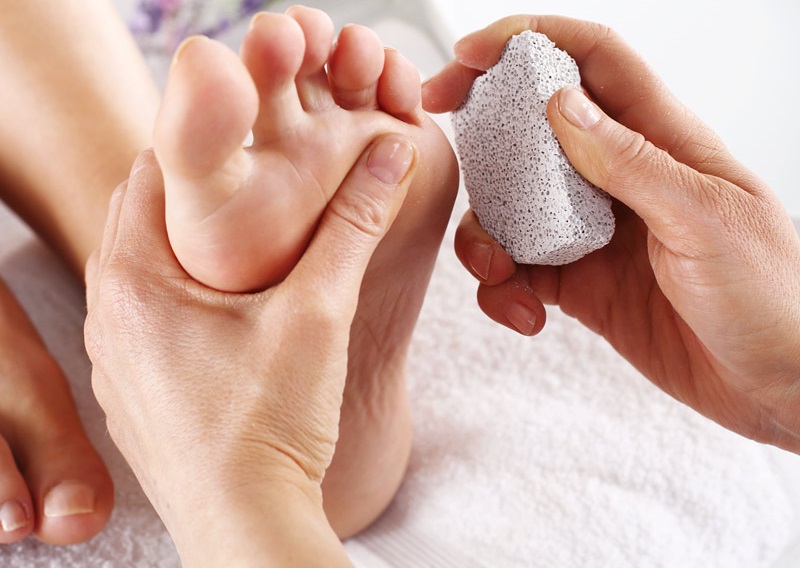 .
.
Depending on your case and the method you choose, removing these skin irregularities can be very simple. This process barely requires any effort, but rather patience. Keep in mind that the most important thing of the treatment, regardless of which method you use, is to keep the skin free from more friction and stress.
Method #1: Castor Oil and Apple Cider Vinegar
For this method, you’ll need a recipient where you can comfortably fit both of your feet for some minutes. Alternatively, you could use two individual recipients to fit each foot. You’ll also require a pumice stone.
*Castor oil may cause stains on socks and footwear. While using this treatment, make sure to wear a pair of old socks that you don’t mind getting stained. Try to use the same socks (or other old pairs) for as long as you’re applying castor oil.
Step 1: Fill the recipients with hot water and add some soap until the surface is bubbly. Then, proceed to add one cup of apple cider vinegar.
Step 2: Let your feet rest in the water for around 15 minutes, up to 30 if the skin is very thick. Touch the skin to determine the softness of it; if your toes are getting wrinkly, you should be good to remove your feet from the water.
Step 3: Without drying your feet, and once your skin is soft, use a pumice stone to gently rub off the dead skin. Avoid applying too much force to the skin, don’t remove more than what’s necessary.
Step 4: Do not rub the corns with the pumice stone. Instead, use a cotton ball or a cloth to apply some castor oil to it and don’t wash it off. Repeat this process daily until the corn is gone (generally a week is enough).
If the corn bothers you while walking, place some clinical moleskin around the corn. The corn padding must have the shape of a donut, surrounding the corn. This should prevent it from entering in contact with the shoe while walking while the treatment removes it.
Recommended
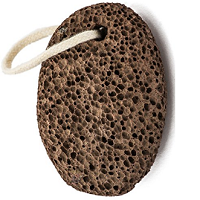
- Zenda Naturals Pumice Stone
-
Our rating - Natural Lava Pumice
- Price: See Here

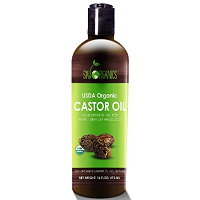
- Sky Organics Castor Oil
-
Our rating - For All Skin Types
- Price: See Here

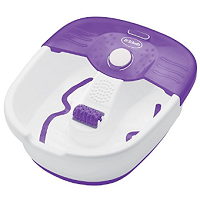
- Dr. Scholl's Foot Tub
-
Our rating - 5 Piece Set
- Price: See Here

Method #2: Lemon
Arguably the simplest method on this list. This is a removal method for corns only, the acids in lemon have no healing effects on calluses.
Step 1: Cut a slice of lemon about 3-5cm long with a width barely wider than the corn. If the corn is located on a toe, make the slice the width of the toe. Peel the lemon and use the pith.
Step 2: Place the pith on top of the corn (the white tissue of the pith facing the corn). Secure the piece of lemon by holding it down with a bandage or something similar.
Step 3: Let the lemon sit on top of the corn overnight. Try sleeping face-up or on your side in a position where you are unlikely to violently move the lemon.
Step 4: Wear an old pair of soft cotton socks. If you have a long pair of socks, wear them and fold the upper half back down to double-cover the corn area if possible.
Repeat this process as many times as necessary, you should be able to notice the corn gradually fading. Don’t apply any other chemical products to the corn while using this treatment.
Recommended
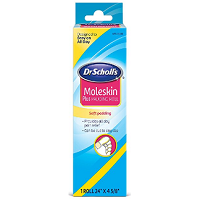
- Dr. Scholl's Moleskin
-
Our rating - Thin Design
- Price: See Here

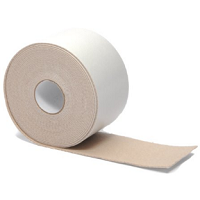
- Extra Heavy Moleskin
-
Our rating - Soft Napped Cotton
- Price: See Here

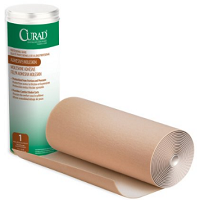
- Curad Moleskin
-
Our rating - Latex Free
- Price: See Here

Method #3: Vitamins
The properties found in vitamins A and E are great agents to reduce corns and eventually eliminate them. This method is better performed with capsule vitamins.
Step 1: Soften the corn by soaking the affected area in warm or hot water, preferably adding some soap to the water. Let it soak for about 15 minutes to facilitate the process.
Step 2: With a very thin needle, poke a capsule of vitamin A or E far enough to dip the needle in the substance of the capsule.
Step 3: Using the same needle soaked in vitamin, rub the oily substance into the corn. Allow the oil to sit for around 10 minutes before wearing any socks.
Step 4: Wear wool socks that are comfortable and don’t cause friction with the corn. Repeat this process every night before going to sleep until the corn is gone.
Recommended
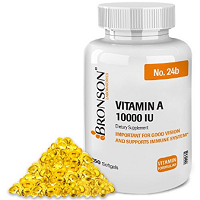
- Bronson Vitamin A
-
Our rating - Softgel Capsules
- Price: See Here

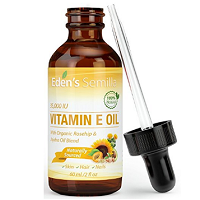
- Eden's Semilla Vitamin E
-
Our rating - Vitamin E Oil
- Price: See Here

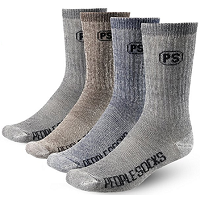
- People Socks Wool
-
Our rating - 71% Merino Wool
- Price: See Here

Method #4: Salicylic Acid
This acid is the preferred chemical to get rid of corns and calluses. Its most popular form is in clinical cream, but you can also find it on multiple home products. For instance, one easily accessible source of salicylic acid is plain aspirins. This is one of the most effective and quick treatments. For this method, you’ll be making your own salicylic acid paste.
Step 1: Find about 4 or 5 plain aspirins and crush them until they are thinly ground. Add half a tablespoon of natural lemon extract and half a tablespoon of warm or water.
Step 2: Mix thoroughly until you get the texture of a paste. If it’s too dense, add another half tablespoon of water. If it’s too liquid, remove some of the substance and add another aspirin.
Step 3: Place the paste around the corn or the hardened skin area and round it with a bit of plastic wrapping. Proceed to place a warm towel over the wrapping to cover it.
Step 4: Let the mixture and towel sit for 15 minutes, trying not to move your foot or the towel. Then, thoroughly remove the mixture and use a pumice stone to carefully remove the softened skin.
If you’re not able to remove all of the skin in one go, don’t press the stone too hard. If your corn is very old and very thick, just try the treatment again a day after. Don’t perform this method back to back, as the skin will still be irritated from the first pumice stone removal.
Recommended
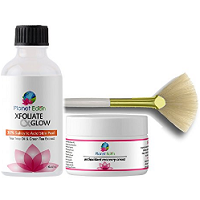
- Planet Eden Salicylic Cream
-
Our rating - 30% Salicylic Acid
- Price: See Here

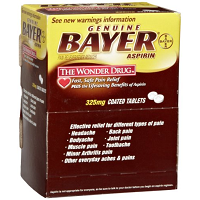
- Bayer Aspirin Tablets
-
Our rating - Pain Relief
- Price: See Here

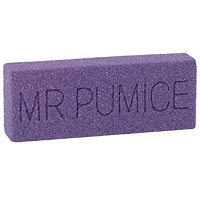
- Mr. Pumice Pumi Bar
-
Our rating - 1 Side Ridges/1 Side Flat
- Price: See Here

Method #5: Bread
The properties of bread are often underestimated. If you don’t have a pumice stone, or simply don’t want to get one, this is your method. This is also the recommended method for delicate skin conditions that shouldn’t be scrubbed with pumice stones.
Step 1: Using some old bread, cut off a loaf and split it in half. Use half of the loaf to soak it in apple cider vinegar for a brief moment, don’t let it fall apart.
Step 2: Place the soaked bread over the corn or the affected skin area. Secure the piece of bread to the foot by using adhesive tapes or holders.
Step 3: Using some plastic wrap, thoroughly wrap the secured bread to make sure it stays there. Make sure it’s firmly secured before wearing any socks.
Step 4: Wear cotton socks (old ones preferably) and try not to perform any rough activities that would loosen the bread. If possible, apply this method before sleeping.
If the method is performed correctly, the skin irregularity should be completely gone by the morning. Never use a pumice stone during this process. If it doesn’t disappear, you still should be able to notice a considerable decrease in both size and hardness.
Also Recommended
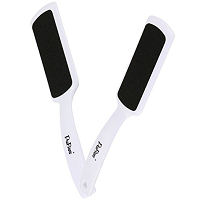
- DaBee Foot File
-
Our rating - Corn/Callus Remover
- Price: See Here

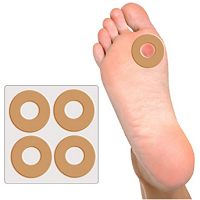
- FootMatters Foam Callus Pads
-
Our rating - Prevents Further Irritation
- Price: See Here

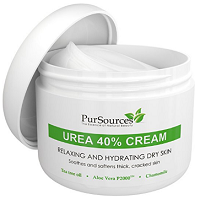
- PurSources Urea Cream
-
Our rating - Repairs Callused Skin
- Price: See Here

Method #6: Epsom Salts
Salts are very efficient when it comes to treating the skin. You’ve probably heard about salt baths before; well, there’s a reason behind them. Salt, especially Epsom salt, have skin-softening qualities that work perfectly against the patches of thick calluses.
Step 1: Find a recipient where you can fit your whole foot and fill it with warm water. Add a generous hand of Epsom salts to the water and stir it a bit so it dissolves.
Step 2: Place your foot in and let it soak for 20 minutes to loosen the thick skin as much as possible. Don’t soak for longer, as skin won’t really get any softer from that point.
Step 3: With a pumice stone, gently rub the dead skin off the surface with soft, short motions. Depending on the callus, you might or might not be able to remove it all in one sit. Don’t force the stone too much, just remove what comes off by scrapping gently.
Step 4: If the whole callus didn’t come off, repeat this process daily until you’re able to remove all of the skin. A simple callus shouldn’t take any longer than 5 days to get rid of. Though, it really depends on the thickness and size.
Recommended
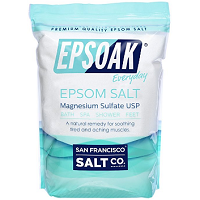
- Epsoak Epsom Salt
-
Our rating - Improves Skin Health
- Price: See Here

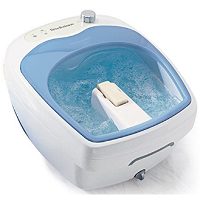
- Brookstone Foot Tub
-
Our rating - Built-In Water Heater
- Price: See Here

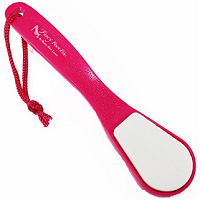
- FFF Pumice & File
-
Our rating - 2 Sided (Fine & Coarse)
- Price: See Here

Treatment Tips
Treating a callus or a corn can be quite annoying depending on the severity of it. Sometimes, it requires multiple days and different methods to start noticing some changes. Below, we’ll go through some basic treatment tips that make the removing process much simpler.
Like we previously stated, it’s very rare for a callus or corn to escalate to a specialist treatment level. In most cases, following our recommended methods above and the tips we’ll list here will be enough. This guide is based on accessible, easy to get home remedies rather than expensive equipment, treatments, or products.
Softening and Pumicing
Regardless of the method you’re choosing, it’s important to properly soften the skin before using any sort of pumice stone. Not doing so makes the process considerably ineffective and can even damage the skin, making the corn worse.
A good way to soften the foot skin is by taking a shower with hot or warm water. Apply the treatment right after showering while the skin is still soft; this way, you won’t need to soak your feet for 15/20 minutes.
You should use a pumice if, and only if, the corn or callus is located on a firm area (underfoot, the palm of the hand, etc.). Zones like the tissue between the fingers should not be pumiced, as the skin is too thin and delicate there. Corns which appear in this area are usually referred to as soft corns. To eliminate them, apply any of the removal methods mentioned above; except you’ll use an emery board rather than a pumice stone.
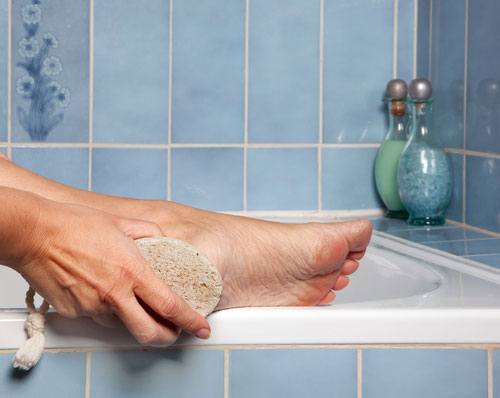
At the moment of using the pumice stone, be very careful with the pressure you apply. Don’t try to rip off the skin; the portion of skin that is dead will come off easily. If it doesn’t come off with normal motions, it’s not ready yet. Split your treatment through multiple days if necessary. If all of it won’t come off in a single session, there’s nothing to do about it.
Forcing yourself upon the pumice stone will result in damage to the healthy portion of the skin. Using excessive force may lead to heavy irritation and even bleeding. If the inner layers of skin become too exposed, you’re even risking an infection.
It’s too hard to tell the layers of skin apart. So, if you’re being too rough on the pumice, chances are you won’t even notice you’re hurting yourself. Use gentle motions just for around 2-3 minutes every session.
Additional Tips
The best moment to remove a corn is when it first appears, especially if you intend to repeat the activity that caused it in the first place. For instance, football players that develop calluses and corn on the underfoot won’t be able to perform due to pain. Additionally, they aren’t necessarily able to have a week or two off while their skin heals.
If you eliminate corns during their early appearance, treatment and removal are much easier and faster. The older it gets, the thicker it will get. Plus, like we said, if you intend to continue applying pressure on that spot, it’ll get considerably worse.
Keep in mind that you should avoid pressure on that spot, at least during the treatment lapse. Taking 1-3 days off is a considerably better choice than having to get off for a week after.
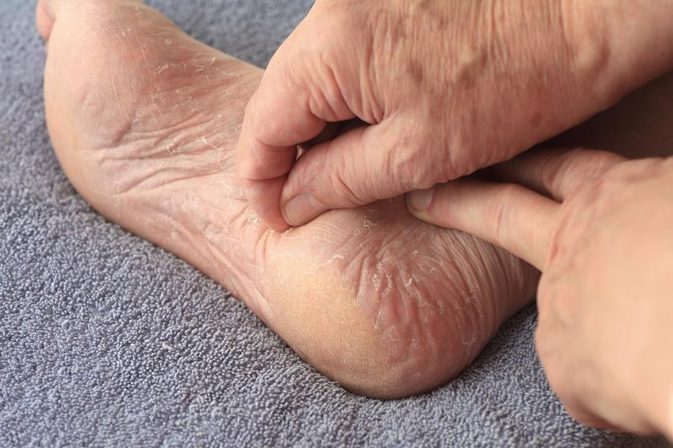
If it’s imperative to continue with your activities regardless of the symptom, there are some ways to reduce the pressure. Clinical paddings (moleskin), for example, do a great job in redistributing the pressure around a corn. If the padding is thick enough, it will also prevent the corn from rubbing against the shoe or sock as you walk. But, the shoe must be comfortable to avoid additional stress.
To make a proper padding, buying a round-shaped adhesive padding and cut a hole in the middle a little bigger than the size of the corn. Basically, the hole is the space for the corn, and the adhesive along with the pressure of walking should keep the padding in place. Do not cover the irregularity with the padding; make sure it’s doesn’t enter in contact with anything.
As the skin anomaly won’t be touching anything, you’ll be able to continue with your treatment while practicing some sports without too much intensity. For instance, you could put some castor oil on the corn, place a bandage on it, use the donut-shaped padding, and take on.
Sources
- , The Correct Use of a Pumice Stone, Article
- , 8 Steps to Healthy Skin, Health & Beauty Article
- , Calluses & Corns, Medical Article
- , Natural Home Remedies for Calluses and Corns, Health Article
- , Reliable Home Remedies for Corns, Article





